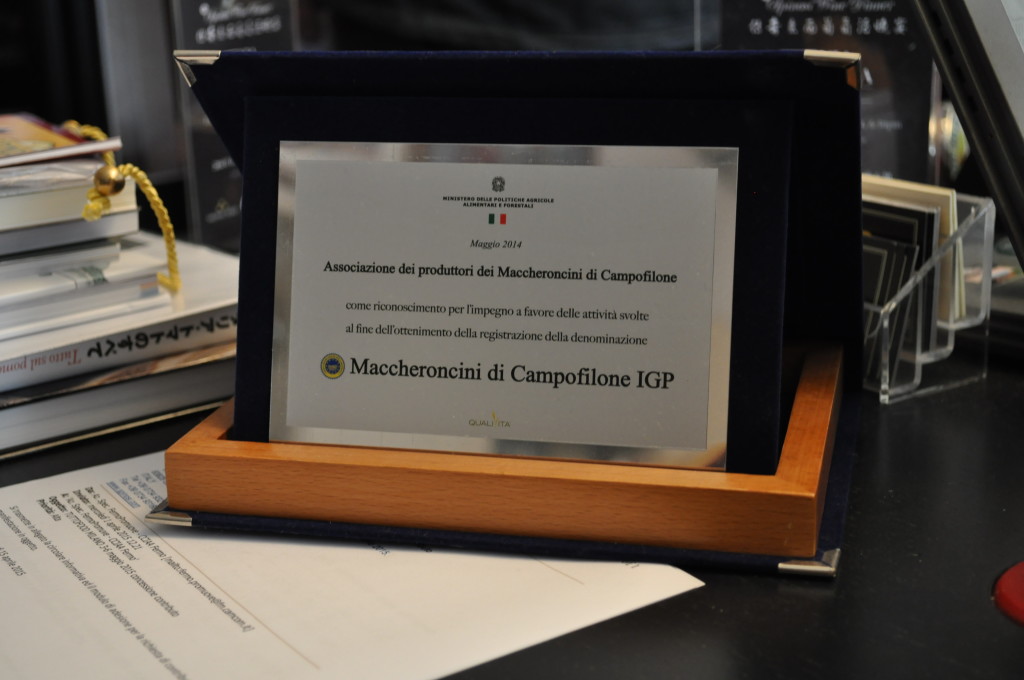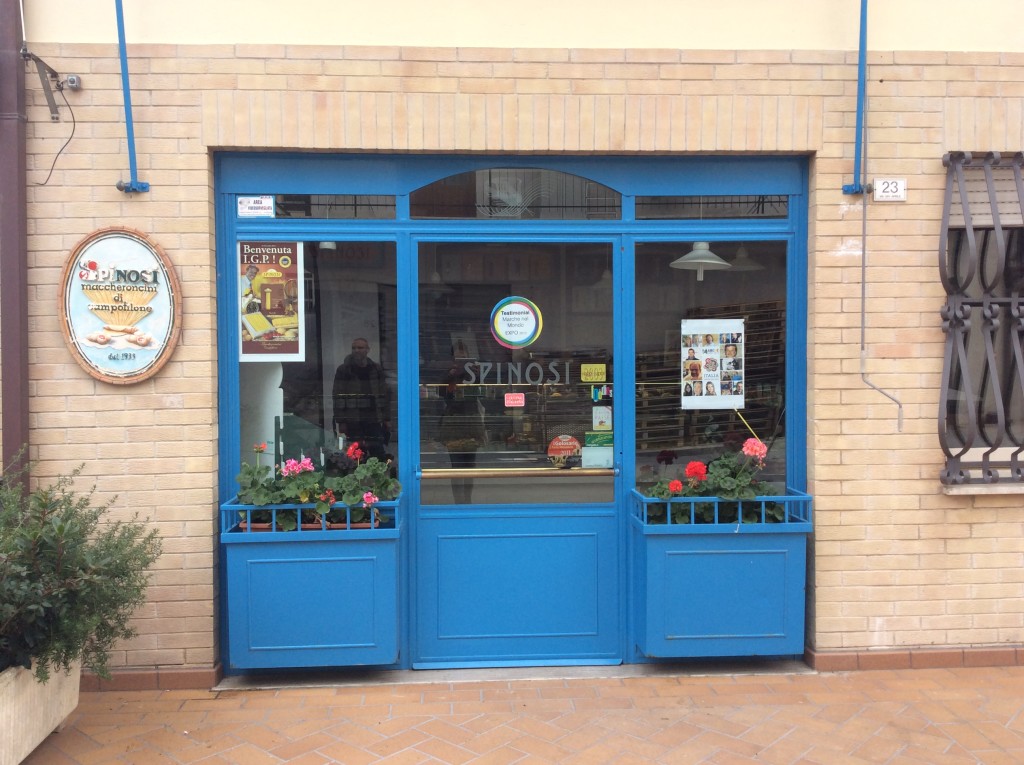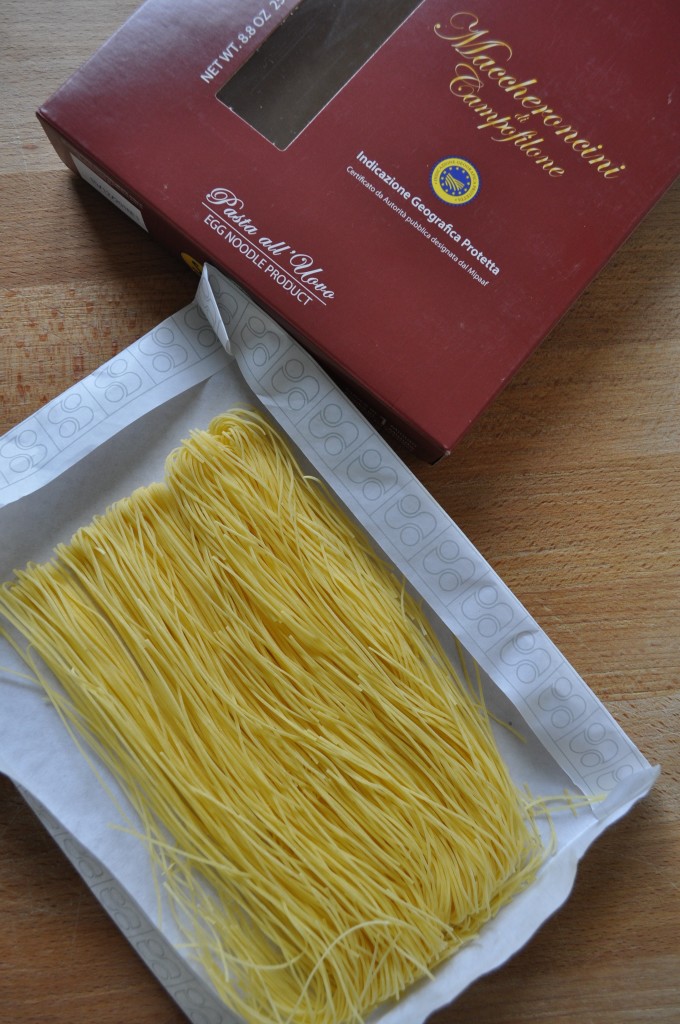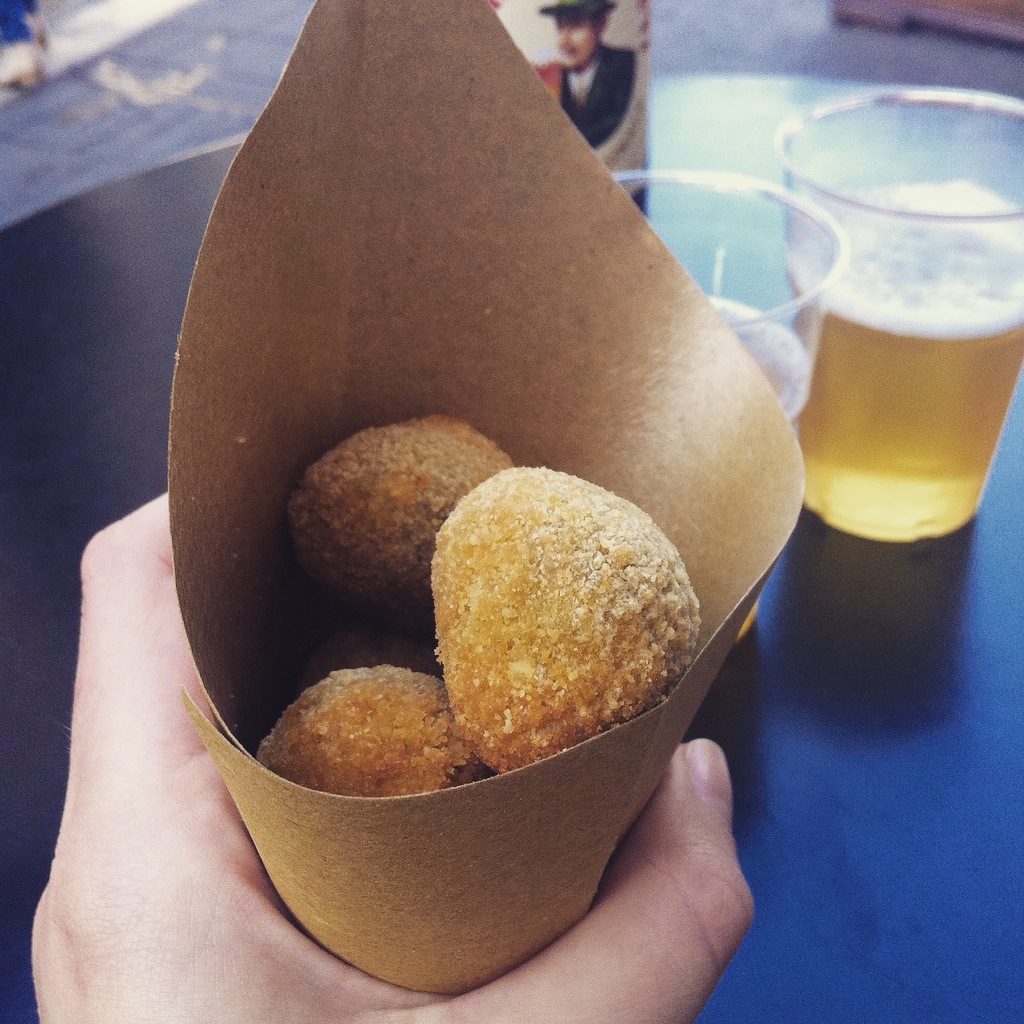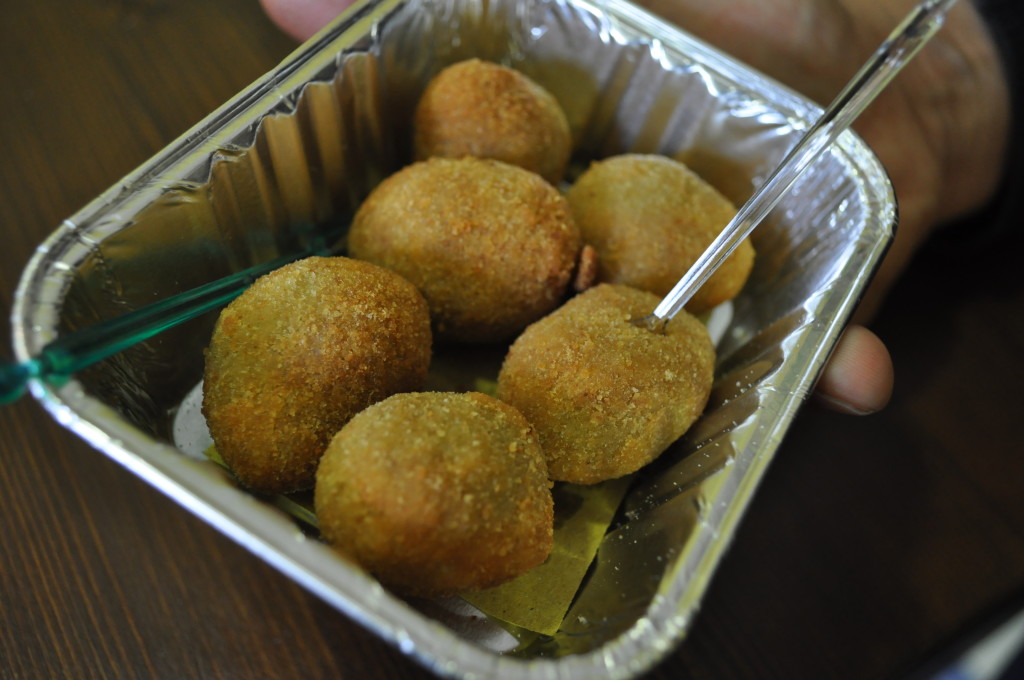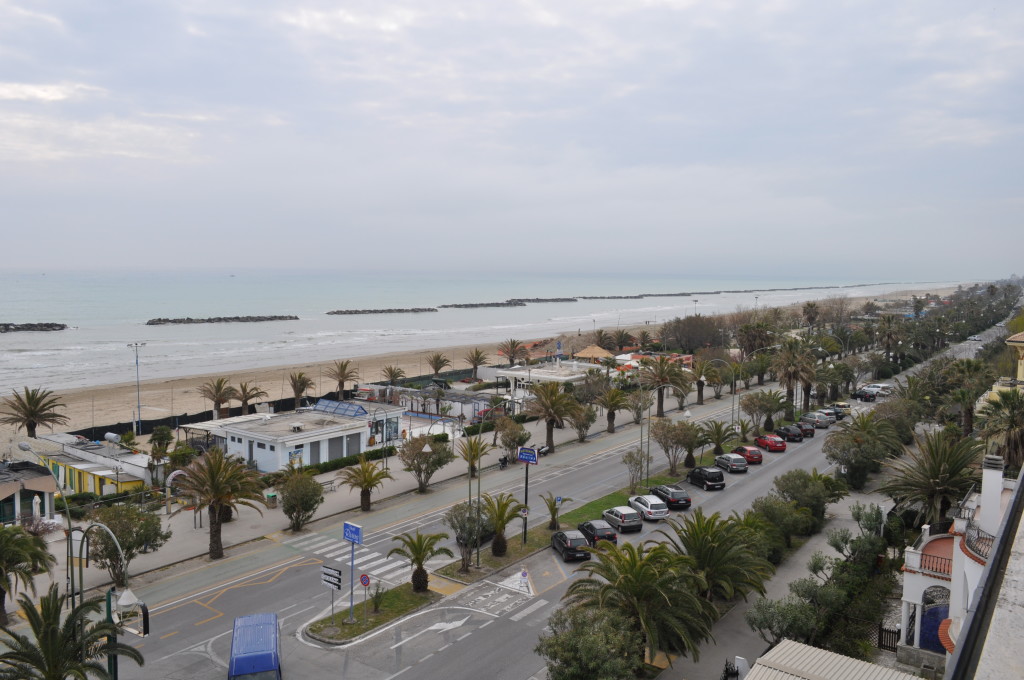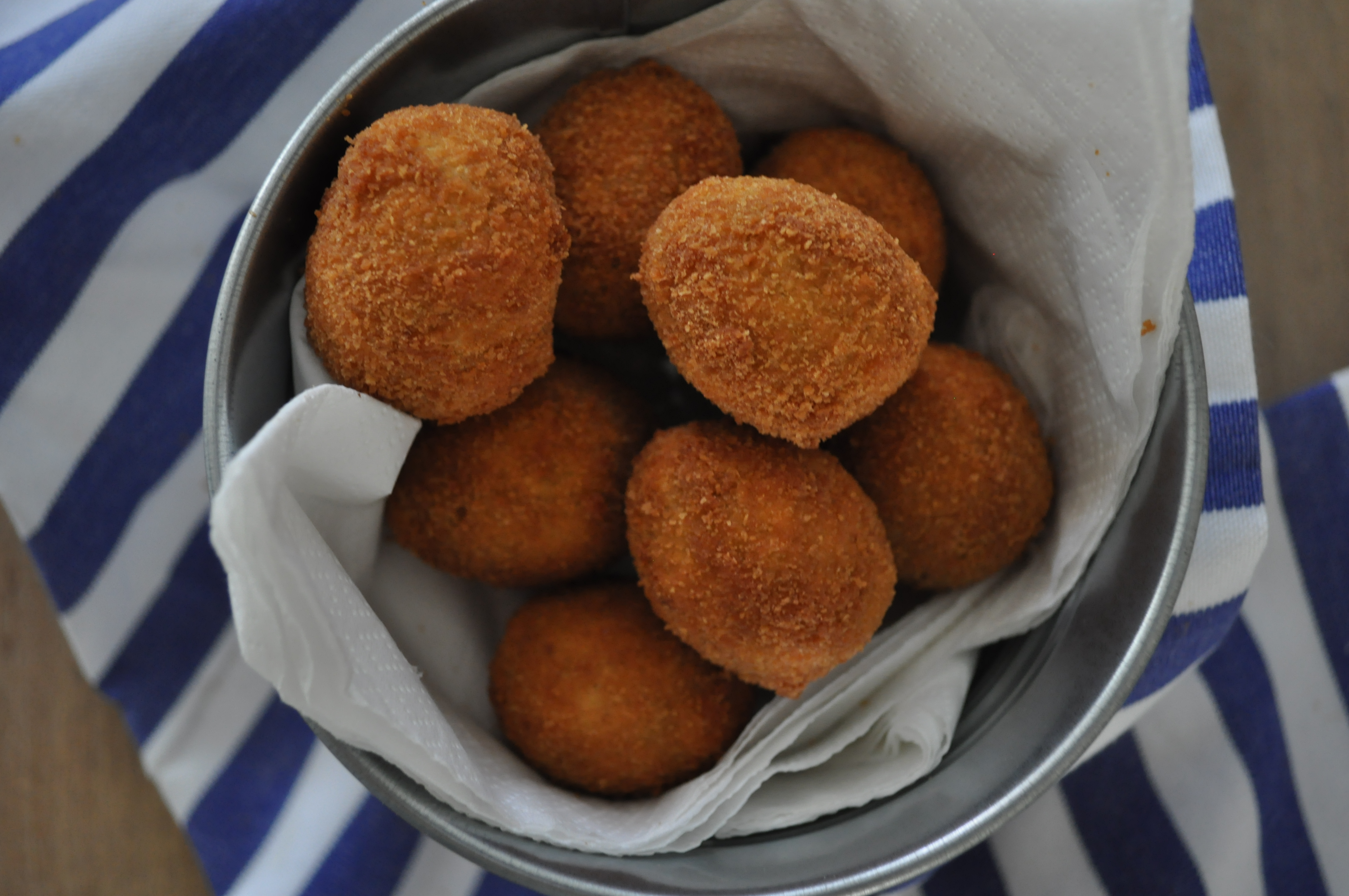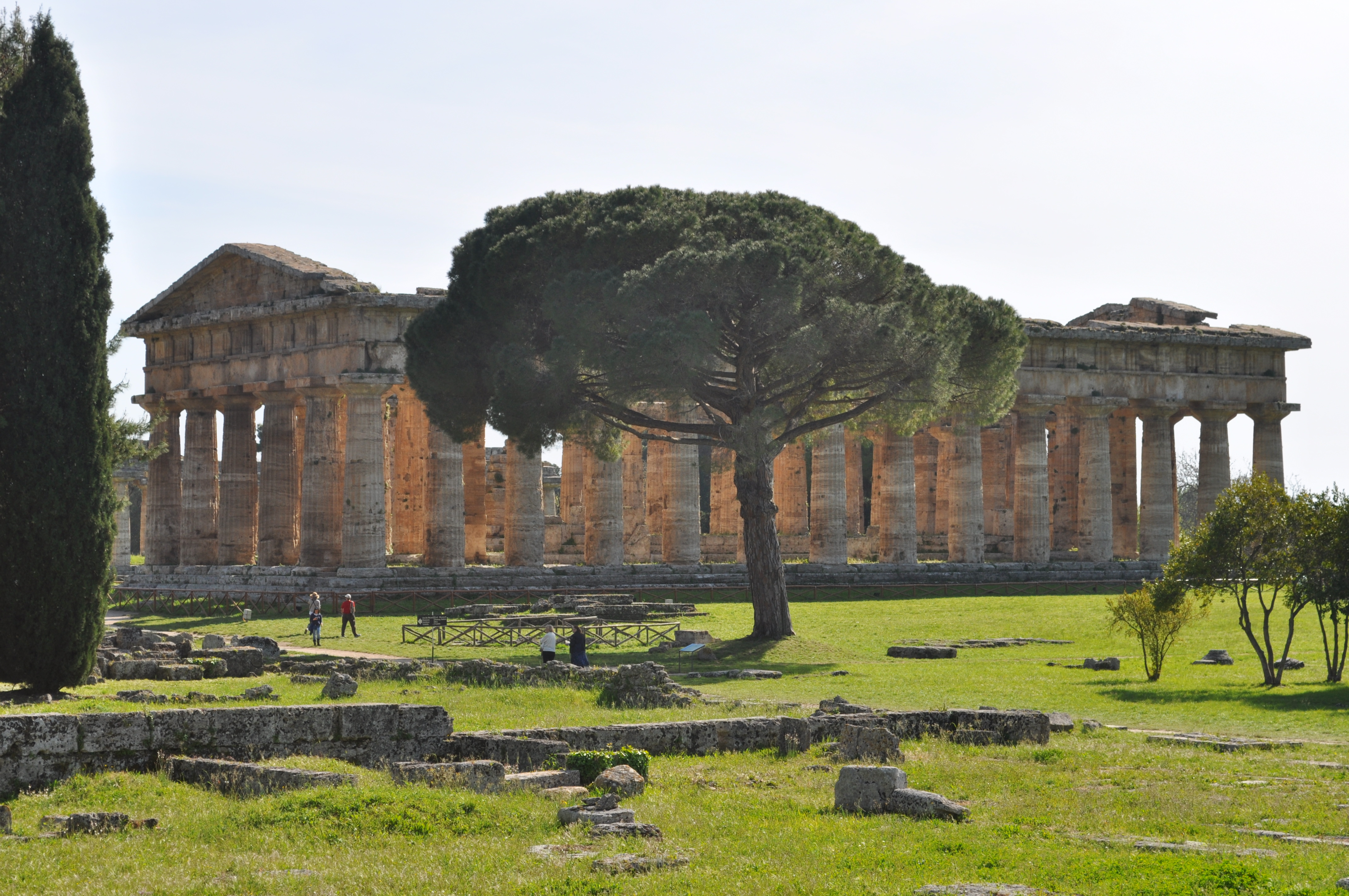The schedule of this gourmet trip is hectic and unfortunately we don’t have time to visit the charming hill country around Castelfidardo, Recanati and Macerata. We head to Campofilone, in Fermo’s province, where I try to understand something more about the Maccheroncini, a famous egg pasta and also a childhood memory, spending my summer holidays in this area.
Campofilone is a small town in the hill country, not far from the sea and it has a charming medieval centre. It became famous thanks to its maccheroncini and every year since 1964 people in Campofilone organise a festival where tourists can taste this special pasta in the most traditional way, with a rich meat ragout.
We enter into Spinosi’s shop, the company who first opened in 1960 a professional lab for the production and sales of this pasta.
Vincenzo Spinosi, second generation owner of this company and also president of “Associazione Produttori Maccheroncini di Campofilone”, is a person with a unique charisma and passion for his product and his brand, with a self-celebrating attitude typical in some US brands.
Thanks to his character, Mr Spinosi managed to make this egg pasta famous around the world, as shown in hundreds of photos and newspaper articles spread around his office. Moreover he has been chosen at Expo 2015 as a Testimonial for the “Marche in the World“.
But, what Maccheroncini di Campofilone are?
They are the first, and so far the only, egg noodles to gain the IGP identification and they are part of the Campofilone’s history for six centuries. It has been proved by documents from Council of Trent and some recipe books of ancient noble families.
They are made of fresh free-range eggs, and semolina flour or common flour.
As the disciplinary says, the thickness of the dough doesn’t have to reach 1 mm (from 0.3 to 0.7 mm) and the noodles have to be cut between 0.8 and 1.2 mm large. Then the maccheroncini are put on specific white paper sheets where they will dry at a temperature between 28 and 40 degrees Celsius for about 24 and 36 hours.
Women in Campofilone were very smart to create such noodles: since they have been dried, they could be stored for a long time and they could be cooked even when there was a lack of fresh eggs. Moreover they are so thin, that you can feed 4 people with just 250 g.
Anyway, this pasta is not simple to cook. But if you know the tricks, the success is guaranteed. These noodles are extremely porous, so don’t be stingy with the sauce and remember to reserve a cup of pasta cooking water, and add it while tossing the maccheroncini into the sauce. The taste will be incredible: even though they are pretty thin, these noodles keep a good structure and thanks to their porosity, they perfectly melt together with the sauce.
We leave the province of Fermo, in order to reach the area of Ascoli Piceno. Here I will be hunting and above all tasting, the real Oliva Ascolana del Piceno DOP. The denomination refers to both the brined olives and the stuffed fried olives, coming from the variety “Ascolana Tenera”, a special olive that grows in this area. In Italy when we speak about Oliva Ascolana we normally refer to stuffed and fried version, which is a real specialty of the Marche region. Personally, if I think about Oliva Ascolana, my mouth starts watering, shaping in my mind this little matryoshka of flavour: a light and crunchy crust includes a rich, soft and slightly bitter olive, which hides a melting and savoury stuffing.
We tasted Olive Ascolane in two places, both excellent: at Olive Più (photo below) in San Benedetto del Tronto, and in the beautiful Ascoli Piceno, the city of travertine, in Arringo Square at Migliori (photo above), that we also recently met again at Slow Fish in Genoa and at StreEAT, the foodtruck festival. The lady at the stand in Arringo square revealed us that they stuffed olives with just pork and beef, no chicken, and they use a 36 months aged parmesan, since it’s more digestible.
Tradition wants that olives, just the variety “Ascolana Tenera”, are pitted by hand and the DOP disciplinary specifies that the meat, pork and beef, used for the stuffing have to be local. A minimum part of chicken or turkey is accepted.
Evoo, onion, carrot and celery to roast the meat, then egg, aged cheese, nutmeg, but I will explain into details ingredients and procedures in a future post.
In the friggitorie, they usually propose different kind of stuffing: veggie, fish or codfish. I’ve not tasted the veggie, but the traditional one wins for sure against the fish versions.
Nowadays Olive Ascolane are officially considered street food, but in the origin they were not food for the crowd. They were prepared for the first time in the kitchens of noble families only for special occasions, since the ingredients are expensive and the preparation is pretty long.
Dear Marche, you are the only region in Italy with a plural name (heritage from the Carolingian Empire) and this suits you perfectly. You have so many different and complementary beauties and treasures, that you left me a strong desire to know you better.
– San Benedetto beach –
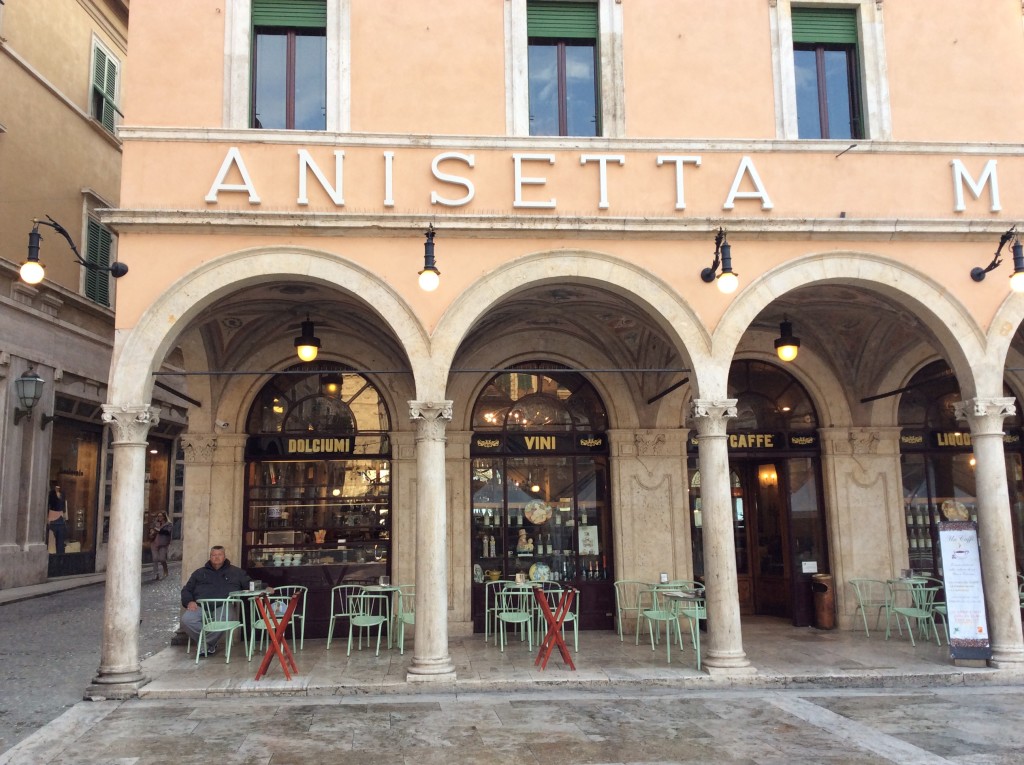 – – Typican Italian Portico in Piazza del Popolo, Ascoli Piceno –
– – Typican Italian Portico in Piazza del Popolo, Ascoli Piceno –
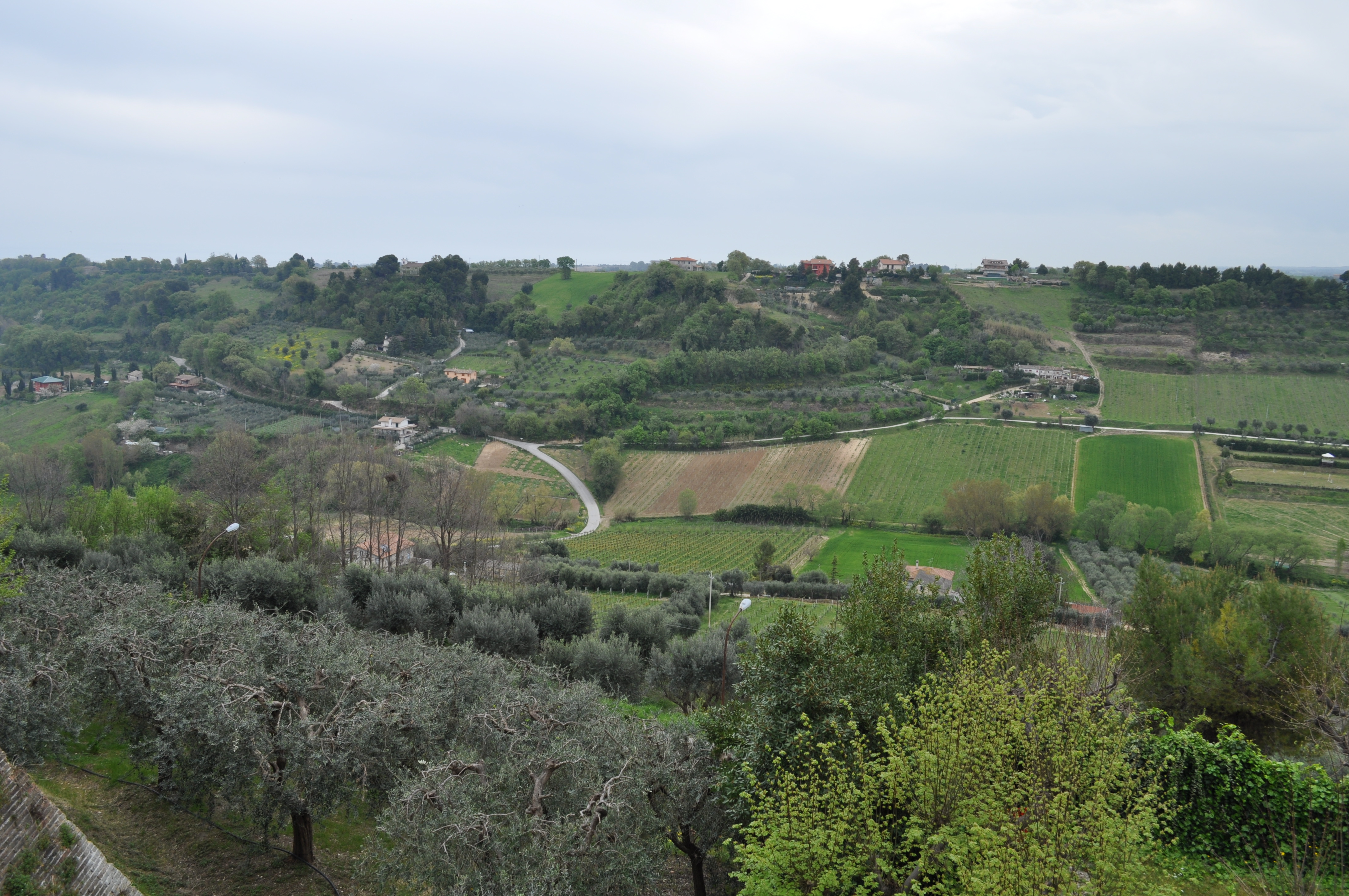
This post is also available in: Italian

